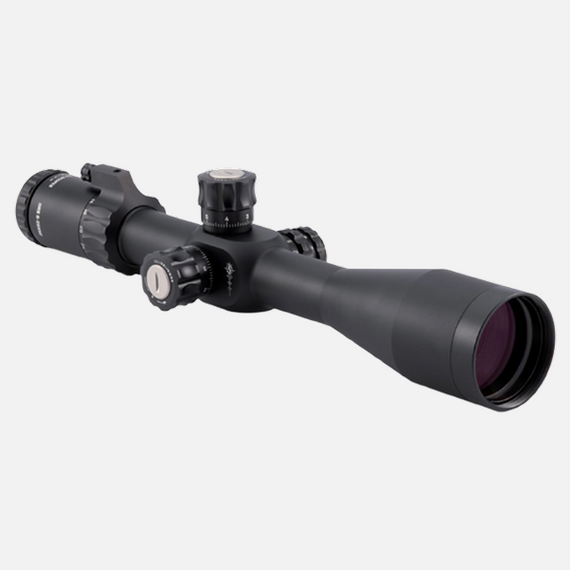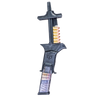There’s a moment every shooter hits where the gear just stops cutting it. You stretch past 300 yards and the picture blurs. Or your thumbs feel like hamburger after loading mags all day. Happens to the best of us. That’s when folks start looking at long range rifle scopes and all the little accessories that make range days smoother.
And here’s the thing—upgrading gear isn’t just about buying flashy equipment. It’s about learning what works for you. The way you shoot, the way your eyes pick up targets, the way your hands load mags. This stuff is personal. So let’s walk through it in a way that feels real, not like some plastic brochure copy.
I’ll break down the long-range scope side first, then swing into speed loaders, because they’re both underrated in different ways. Hang on, this’ll be a long ride. But a good one.
1. Why Long-Range Scopes Matter More Than Folks Admit
I’ve met shooters who swear they “don’t need anything fancy.” Fair enough. But once you start pushing distance, your optic becomes more important than your rifle. Yeah, I said it. Glass > gun, at least past mid-range.
A scope that tracks true, holds zero, and doesn’t wash out at dusk? That’s half the battle. The other half is learning what you’re actually looking at when you see all those numbers on a spec sheet.
Cheap scopes might survive a range trip, but long-range shooting isn’t a casual sport. It’s punishment. Heat. Recoil. Fog. Wind. You need gear that doesn’t fold when the conditions get ugly.

2. Magnification Isn’t Everything (But It Does Matter)
Shooters love big numbers. 5-25×. 6-36×. Makes you feel like you’ve got sniper eyes. But those huge magnification ranges can be deceiving. More zoom doesn’t always mean a clearer or more useful picture.
If the optic turns into a blurry, washed-out mess beyond 16×, it doesn’t matter what the box says. A clearer 12× will beat a trashy 25× every time. Most folks don’t realize that until they’re trying to ping steel at 800 yards and can’t even see the mirage dance.
Pick useful magnification, not bragging rights magnification. Your shots will thank you.
3. Reticles—The Part Everyone Pretends They Understand
I’ll be blunt. Half the shooters buying complex Christmas-tree reticles don’t know how to use them. And that’s fine… as long as you admit it and pick something simpler.
MIL vs MOA? Doesn’t matter nearly as much as understanding whichever one you choose. Same with first focal plane (FFP) vs second focal plane (SFP). FFP is great—until you realize the reticle gets hair-thin at low power. SFP is okay—until you forget the holds only work at max zoom.
So yeah. Reticles matter. But knowing what you’re doing matters more.
4. Turrets—Where Cheap Scopes Betray You
If your turrets don’t track, your shots don’t land. Pretty simple.
Good turrets return to zero. They adjust consistently. They feel tactile, not mushy. Poor turrets? They wander, skip, drift, lie, betray you.
This is why bargain-bin scopes fall apart at long range. You dial 1.2 MIL and hope, but what you get is 0.9 or 1.5, depending on how much the scope feels like ruining your afternoon.
Pay for good turrets. Or don’t bother dialing at all.
5. Glass Quality—The Difference You Don’t Notice Until You Do
Folks argue about HD this and ED that and Japanese glass vs Philippine glass. Honestly, half the debate is marketing noise. But there is a difference once you push past midday conditions.
At dawn? At dusk? In haze? In heat waves? That’s when you see the quality gap.
Better glass helps you spot impacts, read trace, and call wind. Cheap glass hides those clues like a jealous ex.
You can hit targets with average glass, sure. But good glass makes the whole game easier.
6. Mounting—The Forgotten Skill
A $1,200 optic in a $40 mount is like putting racing tires on a lawnmower. Please don’t do it.
Poor mounts shift. They warp. They throw off torque. They bend tubes. But shooters ignore them because mounts aren’t “cool gear.”
Truth is, a rock-solid mount is more important than a few extra features on a scope. Lock your setup down correctly—loctite where needed, torque wrench (no guessing), proper leveling—and watch your groups magically tighten.
7. Training Your Eye—The Scope Doesn’t Shoot for You
Good optics help. They don’t replace fundamentals. At long range, small mistakes turn into big misses. Your breathing, your trigger press, your follow-through—they all get magnified, too.
Take time to learn your optic. Actually use the reticle instead of cranking turrets blindly. Learn what wind feels like. Learn what mirage means.
Gear matters. But practice matters more.
8. Pivoting to Pistols—Where Speed Loaders Earn Respect
Alright, switching gears now. Long-range rifle stuff is great, but if you shoot pistols a lot, there’s something else that’ll change your day: speed loaders.
People mock them until they use them. Then suddenly they’re believers. Because pistol mags, especially Glock mags, aren’t exactly gentle on your thumbs. After a few hundred rounds? You’re done.
So yeah. Let’s talk loaders.
9. Why Speed Loaders Beat “Just Use Your Thumbs”
You ever load 200 rounds by hand? 300? By the time you hit round 150, you start questioning life decisions.
A good speed loader does three things:
– Saves your thumbs
– Saves your magazine springs
– Saves your time
But more than that, it lets you stay focused on shooting—not nursing sore fingers like some medieval torture victim.
Once you get used to using a loader, going back feels ridiculous.
10. What Makes a Good Speed Loader Actually “Good”
Not all loaders are equal. Some feel flimsy. Some slip. Some chew up case rims. Some look like clever inventions but end up slower than hand-loading.
A good loader fits Glock mags snug. No wiggle. No awkward two-hand yoga. It shouldn’t take a manual to figure out, either. You push down, drop a round, repeat. Smooth. Simple.
The best ones survive drops, cold weather, range dust, and the occasional “oops, left it in the car for a month.”
11. Real-World Wins You’ll Notice Immediately
Here’s what people don’t mention enough: speed loaders keep you in rhythm.
When you’re training fast drills, the last thing you want is a five-minute reloading break that kills your flow. Loader fixes that. Keeps your pace steady.
And one more thing: loaders reduce premature wear on mag lips. Most shooters don’t even think about that, but it matters if you’re burning through thousands of rounds a year.

12. Wrapping It Up—Two Tools That Actually Make You Better
Long-range scopes help you see better. Speed loaders help you train better. Neither is magic. But both make the shooting experience smoother, cleaner, less frustrating.
If you’re serious about long-range work, invest in real glass. Not the bargain junk. Learn your reticle. Learn your turrets. Learn the environment.
And if you shoot pistols, treat yourself to the best Glock speed loaders you can get your hands on. Your thumbs (and your training time) will thank you.
Good gear doesn’t make you a great shooter. But it sure makes the journey a whole lot better.
FAQs
1. Are long-range rifle scopes worth the money for beginners?
Yes, if you plan to shoot beyond 300–400 yards. Cheap optics fall apart fast at distance.
2. What magnification is best for long-range shooting?
For most shooters, 4-16× or 5-25× hits the sweet spot. Clarity matters more than zoom.
3. Do I need FFP or SFP for long range?
FFP is easier for holdovers. SFP is fine if you understand the limitations.
4. Are Glock speed loaders actually necessary?
Not required, but incredibly useful. Saves time, thumbs, and magazine wear.
5. Are universal speed loaders any good?
Some are. But Glock-specific loaders usually work smoother and faster.
6. Do speed loaders damage magazines?
Cheap ones can. Good ones protect them by reducing stress on feed lips and springs.
 WhatsApp Us Now
WhatsApp Us Now









